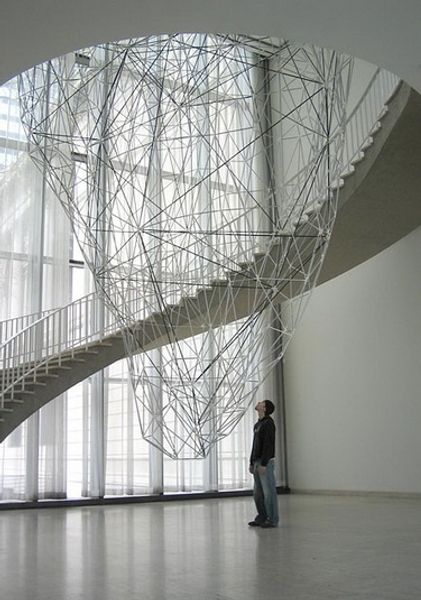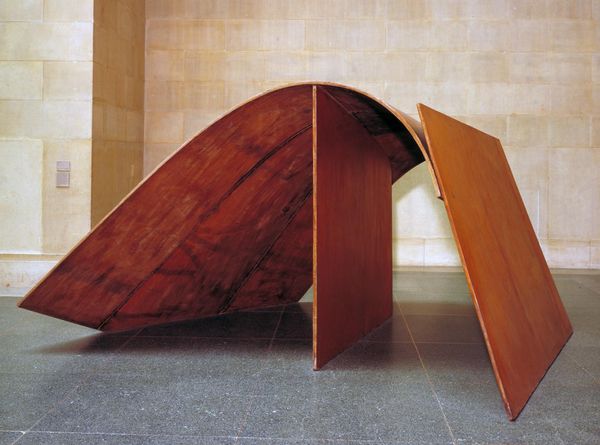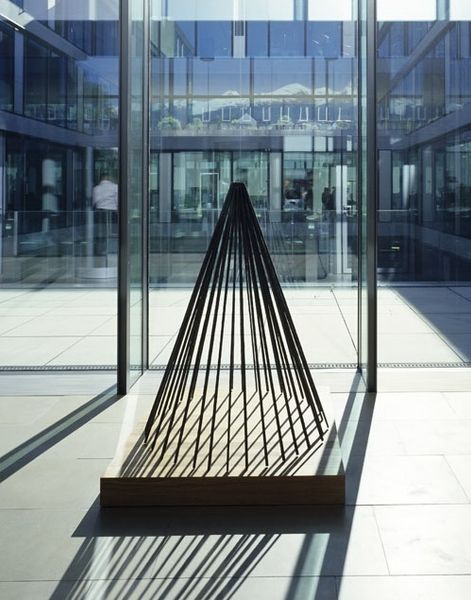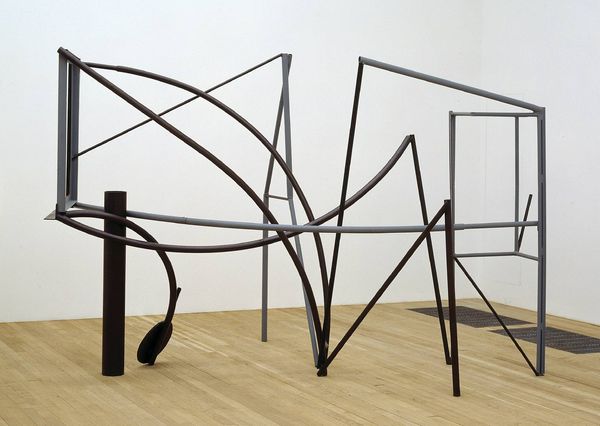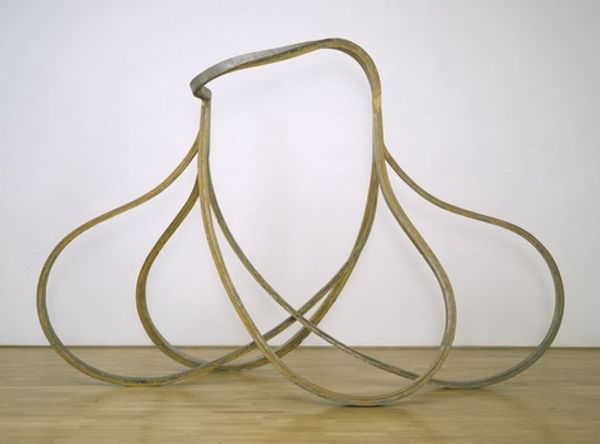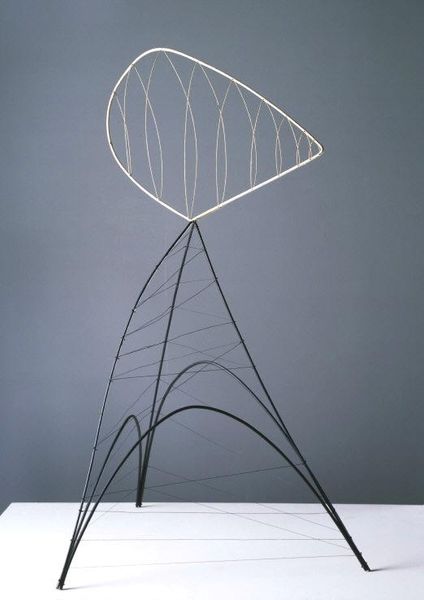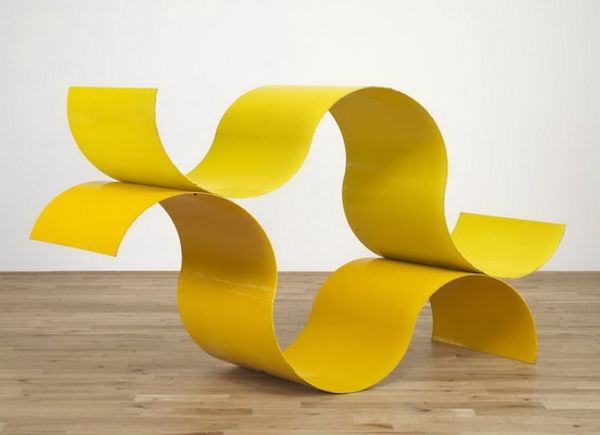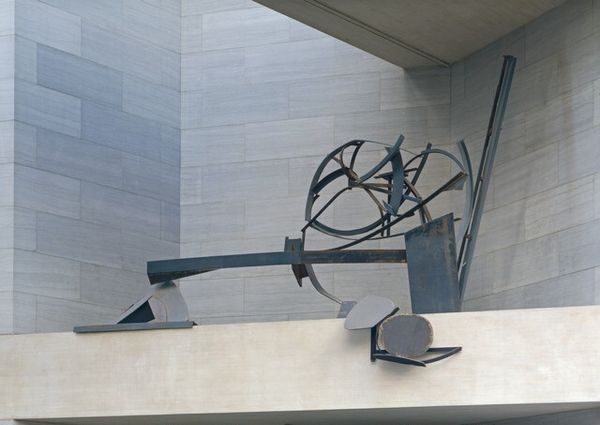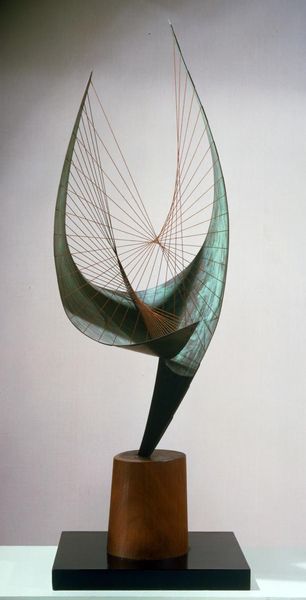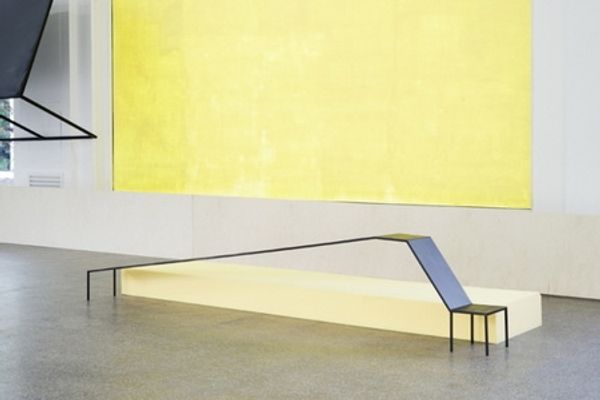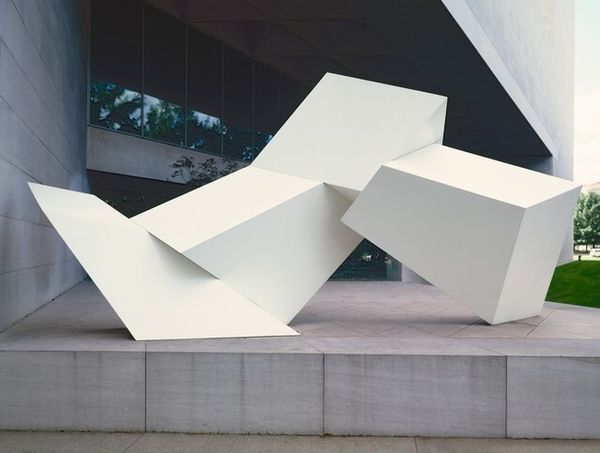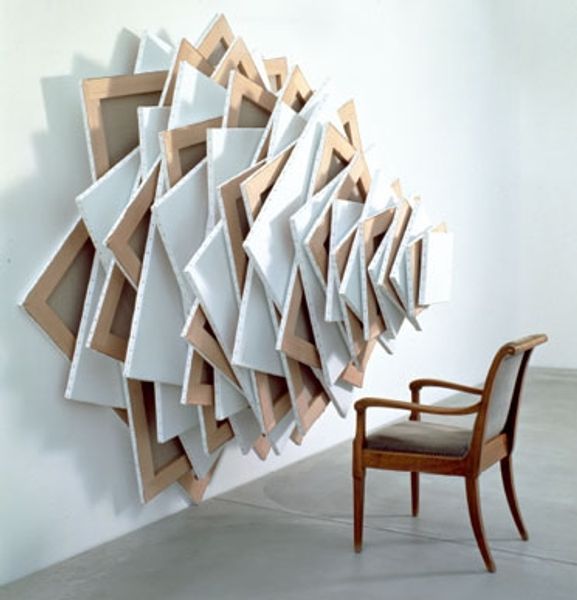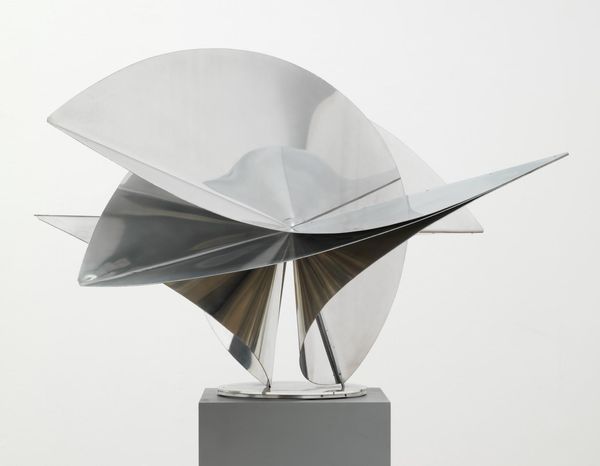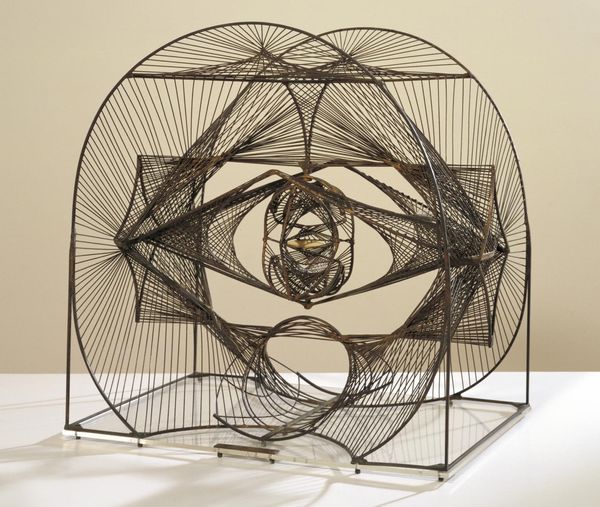
metal, sculpture
#
minimalism
#
metal
#
postminimalism
#
geometric
#
sculpture
#
abstraction
#
line
Copyright: Richard Deacon,Fair Use
Curator: Before us, we have an untitled sculpture crafted by Richard Deacon in 1980, an excellent example of his early exploration of form through metal. What's your initial reaction? Editor: It strikes me as a kind of skeletal vessel. The curving metal evokes ribs, or perhaps the frame of a long-forgotten boat, creating a sense of fragility despite its material. It almost feels like something excavated. Curator: That resonates. Deacon's work during this period often challenged notions of solid form and spatial relationships, reflecting a shift from minimalism towards more subjective expression within post-minimalism. Considering its date, the sculpture presents an interesting study in the context of Britain’s socio-economic climate in the early 1980s – particularly regarding the decline of traditional industries and rise of new artistic languages. Editor: The radial pattern also reminds me of mandalas – ancient diagrams used for meditation and symbolizing the cosmos. This geometric structure seems inherently coded with cycles of creation and destruction. And consider the material – metal. It possesses ancestral associations: think of tools, weaponry, later industry and mass production – so many associations rooted in civilization's progress and conflicts. Curator: Yes, by using a relatively common industrial material, Deacon removes any pretense of classical artistry. The choice invites viewers to consider labour and utility, engaging critically with industrial landscapes and histories embedded in the post-industrial transition period. Editor: Do you think that Deacon's intent may be more deeply rooted than the pure formalism of its appearance? It seems he has touched a very primordial cord. Even without direct religious iconography, the use of specific construction techniques suggests ancient crafts that reflect cycles and creation that mirror many religious cosmologies. Curator: It's possible. We have a framework, devoid of literal interpretation, leaving the space open to multiple readings within post-structuralism’s dissolution of singular truths. Ultimately, by not dictating meaning, the artwork grants audiences agency to formulate personalized connections between abstract art, broader societal experiences and perhaps even ancestral understanding. Editor: Precisely, like any enduring symbolic piece. What lingers for me is this delicate sense of balance – the equilibrium of shadow and form in its dance. I would never expect metalwork to embody such softness, really! Curator: The capacity to reinterpret historical processes via a deconstructed aesthetic— that, perhaps, is one of its enduring contributions, encouraging critical reflection on identity amidst societal metamorphosis.
Comments
No comments
Be the first to comment and join the conversation on the ultimate creative platform.
